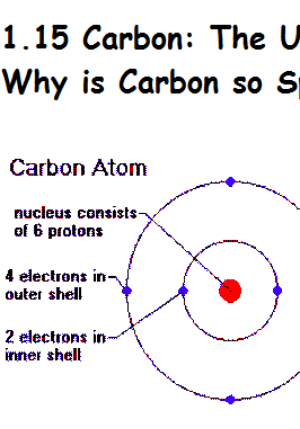
- #Carbon electron configuration art how to
- #Carbon electron configuration art series
Electrons = 6: This atom is also balanced in charge so it also needs six electrons. Protons = 6: As long as it’s carbon it has six protons. Example: Carbon-14Ĭarbon-14 is the radioactive isotope of carbon that is often used in carbon dating of historical artifacts. This gives an electron configuration of 2-4.ĭiagram of a carbon-12 atom. Electron shells (2-4): We have six electrons, so the first two go into filling up the first electron shell, and the rest can go into the second shell, which can hold up to 8 electrons. (Note: we haven’t talked about unbalanced, charged atoms yet, but the charge will show up as a superscript to the right of the symbol.) Electrons = 6: This atom is balanced in charge so it needs six electrons with their negative charges to offset the six positive charges of the six protons. Neutrons = 6 : Since the atomic mass is 12 (upper left of the element symbol), to find the number of neutrons we subtract the number of protons (12 – 6 = 6). Protons = 6: Since we know the atomic number is 6 (because we memorized it), the atom has 6 protons. Example: Carbon-12įor example, the most common form (isotope) of carbon-12 is written as: So, if I wrote just the element symbol and its atomic mass on the board that students should be able to figure out the number of particles. And to draw the atoms you fill up the inner shells first then move on to the outer shells. Each shell can hold a certain maximum number of electrons (2 for the first shell 8 for the second shell and 8 for the third). #Carbon electron configuration art series
This oxygen atom has 8 electrons in two shells.Įlectron Shells: Electrons orbit around the nucleus in a series of shells. 
(Note that electrons don’t contribute to the mass of the atom because their masses are so much smaller than the masses of neutrons and protons.

Since the atomic mass is the sum of the number of protons and neutrons, if you know the atomic mass and the number of protons, you can easily figure out the number of neutrons. So how do you know how many neutrons? You have to ask, or look at the atomic mass number, which is usually written to the upper left of the atom. The small atoms that we’re looking at tend to have the same number of neutrons as protons, but that’s not necessarily the case. The atomic mass is the sum of the number of protons (2) and the number of neutrons (2).
The atomic mass (4) is written as a superscript to the left of the element symbol. We don’t talk about ions –where there are more or less electrons– until later. Protons are positively charged, and electrons are negatively charged, so an atom needs to have the same number of both for its charge to be balanced. The atoms have the same number of electrons as protons. Since they memorized the elements in order, they should be able to figure this out on their own - but they could also look it up quickly on the periodic table, or look at the element symbol where the atomic number is sometimes written on the lower left. 
The atomic number is the number of protons.
The atomic number is written as a subscript to the left of the element symbol. The key points I wanted them to remember were: ( pdf)Īfter they’d filled out their periodic table template, I went into the parts of the atoms in more detail, and had them practice. Template for the first 20 elements of the periodic table. When we got back to school, the first thing I did was give them an outline of the upper part of the periodic table and asked them to fill it in with the element names. Having the two weeks of winter break to work on it probably helped too. Some found songs on the the internet that helped, while others just pushed through. Most students did a good job at the memorization. 
Since I’d dumped all of this on them in a single class period, it probably was a bit much, but since it was just to give them some context I did not expect the 7th graders, who had not seen this before, to remember it all for the 8th graders it should have been just a review. I even had them draw a few atoms with the protons and neutrons in the center and the electrons in shells. So that they’d have a bit of context, I went over the basic parts of an atom (protons, neutrons, and electrons) and made it clear that the name of the element is determined solely by the number of protons. I started it off by having the students memorize the first 20 elements (H through Ca), in their correct order - by atomic number - over their winter break.
#Carbon electron configuration art how to
The first step, however, is to teach them how to draw basic models of atoms. This year, I’ve been basing my introduction to basic chemistry for my middle school students around the periodic table of the elements.








 0 kommentar(er)
0 kommentar(er)
